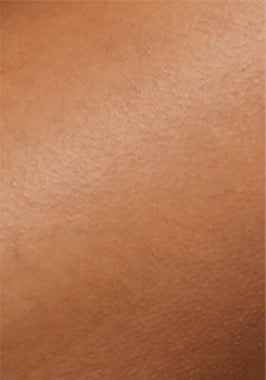Electrolysis hair removal has been around since 1875, and the first electrolysis device was introduced to the market in 1900. Since then, various improvements have been made to make the procedure more accessible to the general public. Galvanic current, thermolysis and then mixed current were the origins of this hair removal technique.
However, the procedure uses electricity and can be painful. Is the pain the same for everyone? How much does it hurt? Can't find the answer? Stick around right now because we're going to discuss this in detail today.

- Part 1: How does electrolysis work?
- Part 2: Does electrolysis hair removal hurt?
- Part 3: Does electrolysis hair removal cause cancer?
- Part 4: Can a cancer patient undergo hair removal through electrolysis?
- Part 5: Who can undergo electrolysis hair removal?
- Part 6: What are the possible side effects of electrolysis hair removal?
- Part 7: Is there a less painful method for long-lasting hair removal?
- Part 8: Conclusion
How does electrolysis work?
Wondering where the stories come from that electrolysis is painful or carcinogenic? People started these speculations because of how electrolysis works. This procedure uses electricity to destroy the hair roots and follicles. During the treatment, the electrologist uses a thin wire or needle that he or she inserts into your hair follicles.
Then, electricity passes through this needle and reaches the hair roots. When the current reaches the target area, it completely eliminates the growth center of the unwanted hair and stops its growth. The hair that has already grown is then pulled out using tweezers.
Either electricity (galvanic electrolysis), heat (thermolysis) or a mixture of both is used. The use of electricity and heat has given rise to rumors that the procedure is painful and carcinogenic.

Does hair removal through electrolysis hurt?
Unfortunately, it does. You may feel discomfort, pain, or a pinching sensation at the treated area during the procedure. But everyone who has undergone electrolysis has a different opinion on this.
This is because the pain threshold varies from person to person. People with a high pain threshold experience minimal or no pain during the procedure, while people with a low pain threshold find the procedure very painful. Pain also depends on the area being treated. Sensitive areas such as the armpits and upper lip hurt more than other parts of the body.
If you are afraid of pain, you can ask your electrologist to sedate you or give you an anesthetic before the procedure.
Does electrolysis hair removal cause cancer?
Electrolysis uses either galvanic current or heat to destroy hair follicles. Galvanic current triggers a series of chemical reactions, while heat damages the follicles. This led to the belief that electrolysis could cause cancer.
However, this is a myth. Electrolysis is a method that is safe and beneficial for all skin types. It is also an FDA-approved procedure, which means that it has no life-threatening side effects for your skin and body. Additionally, there is no research to date that shows a link between electrolysis and cancer.
Can a cancer patient undergo hair removal through electrolysis?
There is no evidence that electrolysis hair removal causes cancer, but what about the effect for those who already have cancer? Sadly, they can't. Not only electrolysis, but other methods of hair removal can be harmful to them.
This is because cancer patients have a weak immune system, as the cancer cells can attack your bone marrow and weaken your defense system. Electrolysis carries a risk of infection as your skin becomes sensitive after the procedure. So if you have cancer or another condition that involves a weakened immune system, it is best not to undergo the procedure.
In addition, chemotherapy affects your immune system when hormone therapy causes dryness and thin skin, so electrolysis is also quite risky during your cancer treatment.

Who can undergo hair removal with electrolysis?
Electrolysis hair removal is safe for all skin types and hair colors. The method works on all hair types, whether they are thick or small, or anywhere on your body. It is a bit time-consuming, but the advantage is that anyone who is healthy can be a suitable candidate for electrolysis hair removal.
Why do we have " healthy people ” ? That’s because there are some skin conditions and other systemic diseases that electrolysis is not suitable for. For example, if you have eczema or a bacterial, viral or fungal infection, electrolysis may worsen your skin condition.
If you are taking anticoagulants, suffer from diabetes or other diseases such as HIV, hepatitis, etc., electrolysis for hair removal is certainly not a good choice.
What are the possible side effects of electrolysis hair removal?
Electrolysis hair removal is an efficient and user-friendly method in terms of safety and results. However, there are some side effects that can occur, mainly due to incorrect use.
redness and blisters
Redness is a common side effect not only of electrolysis, but also of other hair removal treatments such as laser hair removal, IPL and waxing. It mostly occurs in people with sensitive skin and the redness can disappear on its own after a short time.
However, if your skin is particularly sensitive and the expert is not skilled enough, you may also have to expect blistering.
dryness
Another aftereffect of this long-term method of hair removal is that your skin will become dry over time. This is because heat or electricity is used during the treatment, which can make your skin dry. The dryness can worsen over time and become visible to everyone.
You can use natural ingredients like aloe vera gel or a mild moisturizer to combat this dryness and continue to have smooth skin.
inflammation
It is not a given that everyone will experience redness or dryness after electrolysis. Side effects can vary from person to person. After treatment, inflammation or swelling may occur in the treated area.
You can treat this swelling by placing ice packs on the treated area.
risk of infection
Once the treatment is complete, your skin becomes sensitive and foreign bodies like bacteria and viruses can easily enter the skin and cause skin infections. Not only the bacteria, but your body is also exposed to dirt and dust throughout the day, which leads to acne and pimples.
skin discoloration
Skin discoloration after electrolysis can occur in normal cases and due to skin damage during treatment. In most cases, skin discoloration occurs as a result of post-inflammatory hyperpigmentation.
When the current passes through your hair follicles, it causes scarring, which in turn causes the formation of small red dots on your skin. It may take a few months to 2 years to completely treat this hyperpigmentation. Additionally, skin damage may occur if your practitioner is not qualified enough to perform the procedure properly.
Ingrown hair
Electrolysis hair removal was originally designed to treat ingrown hairs and can also help prevent them. But it can also cause them. Why is that?
If the treatment is done properly, your hair follicles will remain intact and will not be completely destroyed. As a result, your hair may grow back and even cause ingrown hairs. The ingrown hair is very painful and itchy and can even keep you awake at night.

Is there a less painful method for long-lasting hair removal?
Electrolysis is good and effective, but the pain is not bearable for everyone. So what can you do instead? Replace this hair removal with another long-lasting hair removal like IPL hair removal. IPL treatment is less painful, long-lasting and useful for anyone who wants to make their skin hairless with as little pain as possible.
To increase your comfort, we have the Ulike Saphir Air 10 device for you.
- The device is small, compact and lightweight, making it best suited for use at home and at your long-stay destinations.
- For most people, it produces noticeable results within 2 weeks. Individual results may vary from person to person
- The results will last for a period of 6 months to a year after you have completed the recommended number of sessions. You will only need touch-ups now and then
- The device costs 429 €. You can also use it unlimitedly " flashing ” , which also contributes to the longevity of the device.
- The device is equipped with a patented ice cooling technology that facilitates hair removal with a minimum of pain and a soothing effect on the body.
- The different intensity settings allow you to adapt the effect of your device to the needs of your skin
As a little extra, Ulike includes protective goggles and a razor with the device, which you get for free.
Conclusion
There are myths that electrolysis is painful and carcinogenic. However, electrolysis is not associated with cancer. As for pain, it can be painful and the intensity of pain depends on the individual's pain threshold.
Your skin sensitivity can also contribute to the level of pain you feel during the procedure. If you think you cannot tolerate the procedure, you can try IPL hair removal with the Ulike Sapphire Air 10. It is fast, provides long-lasting results and is almost painless for treating all areas of the body. The device can also work for up to 10 years.




























